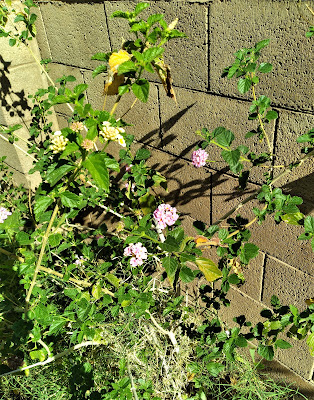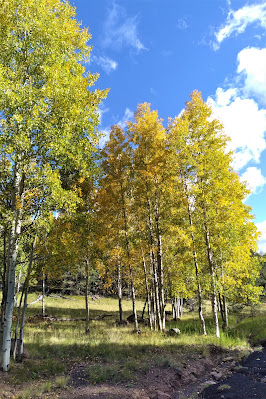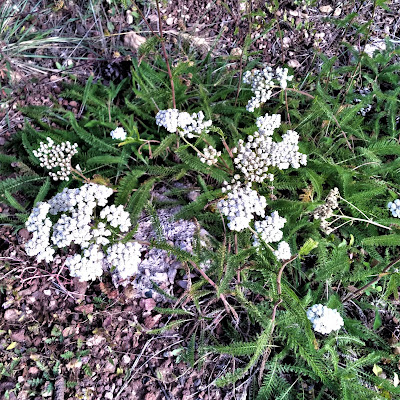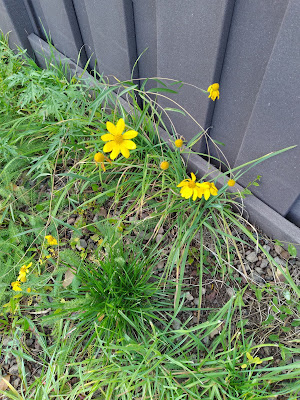Here are some photos from around northern Arizona this October. Northern Arizona looks a lot different than some of you who have never visited this state might expect. This is going to be a bigger post, photographically. It will also have a couple different 'takes' on autumn interspersed.
There is also much more "human activity" in some of these pictures than what I typically include. Some of this couldn't be helped in order to "get the shot." But it's a reminder that, despite how radical environmentalists frame things, our world is a human-natural world cooperation. To even enjoy it involves a human imposition.
After the flood, God gave Noah a rainbow. Christians think of this mostly as a promise that God would not destroy the earth again by a flood. There is also a promise that seasons will follow each other in order until the end of time:
"Through all the days of the earth,
Seedtime and Harvst,
Cold and Heat,
Summer and Winter,
Day and Night
Will not take rest [cease, pause, have a 'Sabbath']." (Genesis 8:22)
San Francisco Peaks
Trees 🌳:
Arizona Walnut
"Quaking" Aspen, a type of poplar;
usually the leaves go golden,
but soil conditions allow some as this
to go reddish
A Non-Native Maple 🍁
A Native, Western Maple 🍁
Basswood/Linden (?)
When you're young, you often just admire Fall for the beautiful change of colors. As time passes, you are more likely to have the haunting sense of 'death' arrive. The leaves are actually dying. While the deciduous trees aren't dying, their dormant state looks dead. Even perceptive children will pick up on this, as in this poem by Gerard Manley Hopkins, an English Jesuit priest:
Spring and Fall
to a young child
Márgarét, áre you gríeving
Over Goldengrove unleaving?
Leáves like the things of man, you
With your fresh thoughts care for, can you?
Ah! ás the heart grows older
It will come to such sights colder
By and by, nor spare a sigh
Though worlds of wanwood leafmeal* lie;
And yet you wíll weep and know why.
Now no matter, child, the name:
Sórrow’s spríngs áre the same.
Nor mouth had, no nor mind, expressed
What heart heard of, ghost guessed:
It ís the blight man was born for,
It is Margaret you mourn for. (1880)
*Leafmeal, akin to "piecemeal"; term coined by Hopkins
The Bible gives us hope in this, though. Job, who was plagued by disaster and lived thousands of years before Christ was born, said in faith:
"For I know that my Redeemer lives,
And at the last [day], He shall stand upon the earth.
And after my skin is destroyed-- this,
And in my flesh shall I see God,
Whom I shall see for myself,
And my eyes shall behold,
And not a stranger. *
My heart yearns within me!" (Job 19:25-27)
*this is more accurate to the Hebrew. Martin Luther made a similar choice, translating it into German, using the word Fremder, "stranger."
Mountain🌄Hike 🚶♀️ 🚶♂️:
solitary aspen leaf 🍂
Aspens Interspersed with Blue Spruce and Douglas-Fir🌲
Conifer Seedling with Aspen Leaf
Rain 🌧🌦🌨off in the Distance
Sweeping Vista
The Pinnacle Humphreys Peak 🗻
"Aspen Corner"
part way down the mountain
Flowers 🌸🏵🌼💐 :
I was frankly surprised to see this many flowers still blooming, especially the 'last' lupine and all the black-eyed Susans, especially considering how cool it was already getting.
Purple False-Clover
pea family
White False-Clover and Yellow Clover
(why one is a true clover and the other is not seems some botanist's whim)
Yarrow
Golden Aster
composite (sunflower) 🌼 family
Native Snapdragon
Cliff Rose 🌹
rose family (along with many common fruits
such as 🍎apple, plum, cherry 🍒, peach 🍑)
[alongside purple coneflower]
Purple Aster
composite family; sometimes called Michaelmas Daisy,
due to blooming around St. Michael's and All Angels Day, 29 September
Maroon & Gold Mexican Hats, composite family
Yellow Mexican Hats
(purple asters among both types of Mexican Hats)
White Asters or Fleabane
Wooly Mullein (Lamb's Ear)
Lupine, much like Texas Bluebonnet
pea family (note pods below)
Purple Coneflower, non-native; composite family
Indian Blanket Flower (Firewheel), Composite Family
only somewhat native to this area;
more common on the southern parts of the Great Prarie;
there are several subspecies with slight color variations
My Favorite: Black-Eyed Susans
composite family
native to the Midwest, from Wisconsin to Texas
They have been seeded and naturalized to this one field in Flagstaff, AZ.Though I like living in the West, these are still a big favorite with me.
with ponderosa pines
with Indian blankets scattered in
A poem of mine on these flowers from August 2019



.jpg)


.jpg)

.jpg)








.jpg)

.jpg)



.jpg)







.jpg)














.jpg)

.jpg)
.jpg)









.jpg)





.jpg)



.jpg)


.jpg)





